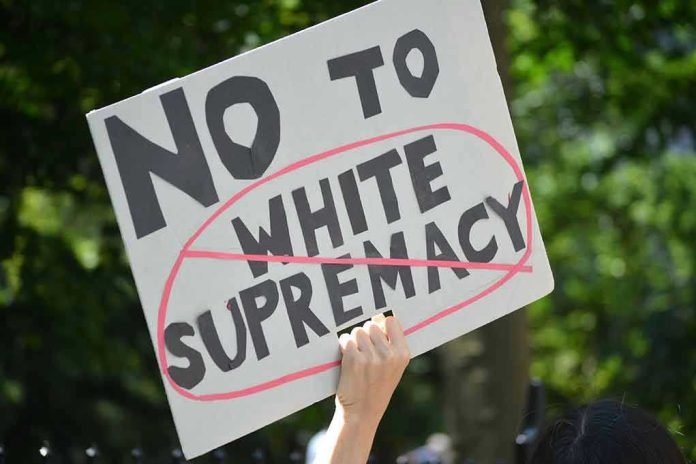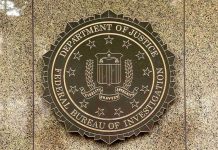
A shocking incident in Georgia has left a community reeling after a man in a Nazi uniform broke a woman’s nose outside a college bar, sparking outrage and a swift arrest.
Story Snapshot
- A man in Nazi attire attacked a woman outside a Georgia college bar.
- The woman’s nose was broken during the assault.
- The attacker was arrested on the scene.
- The incident has drawn significant public attention and concern.
A Violent Encounter in Georgia
A man wearing a full Nazi uniform physically assaulted a woman outside a college bar in Georgia, resulting in a serious injury—a broken nose. The visual shock of the assailant’s attire added a layer of horror to an already violent act. The incident took place in a typically bustling college town, ensuring that the attack did not go unnoticed. Immediate police response led to the arrest of the perpetrator, highlighting the community’s intolerance for such acts of violence and hate.’
Bozo clad in full Nazi uniform breaks woman’s nose outside Georgia college bar and gets busted: report https://t.co/9eVaLS0YuK pic.twitter.com/vAXXPC7T2g
— New York Post (@nypost) October 26, 2025
The choice of attire is not only symbolic but also historically charged, reminding us of a dark period marked by hate and violence. Such symbols, when paraded in public, often aim to instill fear and provoke, which may have been the intention behind this attack. The college community, known for its diversity and openness, now finds itself at the center of this unsettling event, grappling with the implications of hate manifesting so openly.
Historical and Social Context
Nazi symbols are internationally recognized as emblems of hate, antisemitism, and white supremacy, all of which are deeply rooted in the atrocities committed by the Third Reich. In the United States, the public display of these symbols often leads to debates surrounding hate speech, free expression, and the boundaries of public safety. College towns, with their diverse populations, are not unfamiliar with provocations of this kind, though they remain deeply unsettling and demand a robust response.
The setting of this incident—a college bar in Georgia—adds another layer of complexity. Georgia, with its historical backdrop of racial tensions and civil rights struggles, becomes a poignant stage for such an incident. The choice of location, a college bar, suggests a deliberate attempt to attract attention and possibly provoke a reaction from a younger, potentially more diverse audience.
Community and Law Enforcement Response
The college community is understandably shaken, with the safety and well-being of students and staff taking center stage. The swift arrest by local law enforcement underscores the importance of institutional power in maintaining public order and safety. This rapid response is crucial in deterring further incidents and reassuring the community that such acts of violence and hate will not be tolerated.
Law enforcement and judicial authorities now face the challenge of prosecuting this case effectively, while the college administration may need to reassess campus safety measures and policies regarding hate symbols. The incident has opened up a broader dialogue about the balance between free expression and public safety, especially within educational institutions.
Implications and Future Actions
In the short term, the community may face heightened anxiety and increased security measures to prevent further incidents. In the long term, this incident could lead to policy changes at both the college and state levels regarding the display of hate symbols and campus security protocols. The broader societal impact includes potential social and political pressures to address hate crimes more aggressively.
The economic implications might affect local businesses if safety concerns lead to decreased patronage. Politically, local officials might be prompted to take a firmer stance on hate-related incidents, potentially influencing legislative measures. As for the education sector, institutions may need to review and possibly tighten their policies regarding hate speech and public safety to ensure a safe and inclusive environment for all students.












